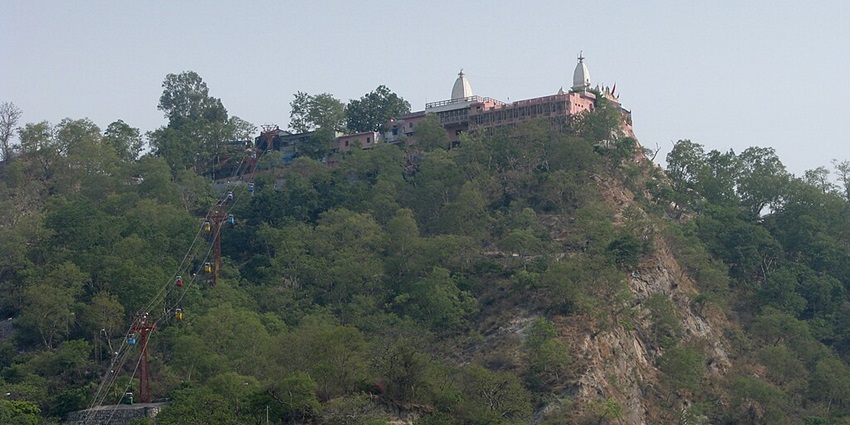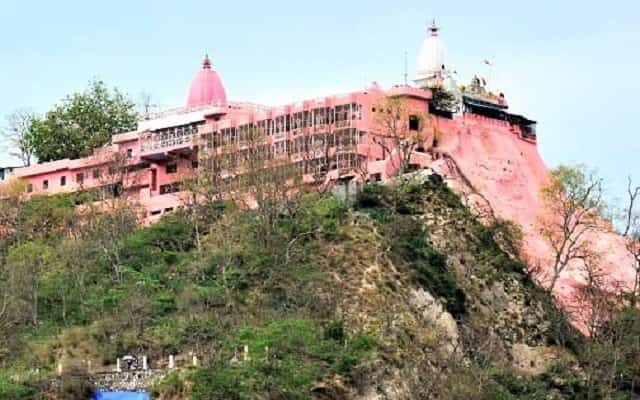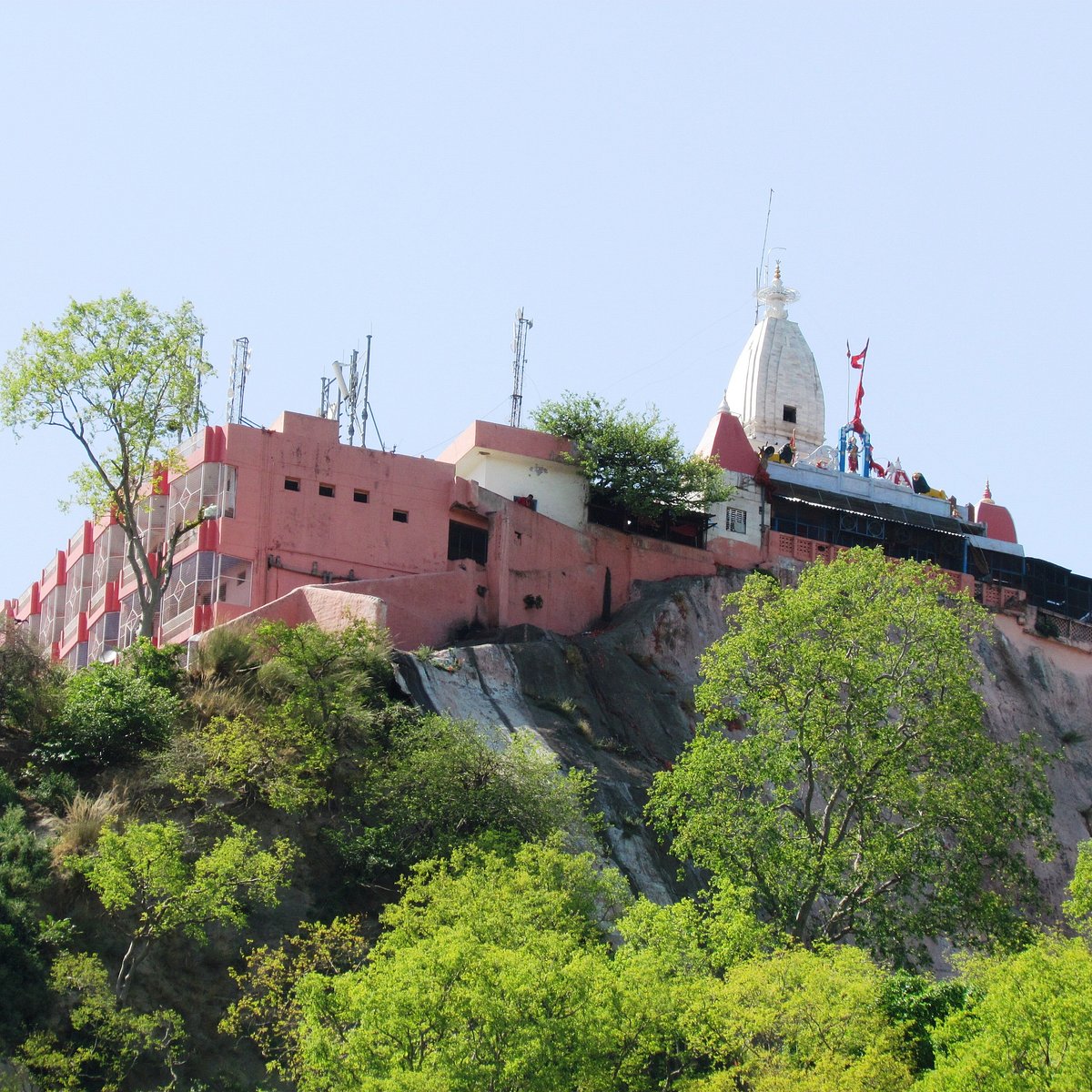Mansa Devi Temple stands as one of the most revered Shakti Peeths in Uttarakhand, perched atop the Bilwa Parvat in the holy city of Haridwar.
Dedicated to Goddess Mansa Devi, believed to fulfill the heartfelt wishes of her devotees, the temple holds a powerful spiritual magnetism that draws thousands of pilgrims and travelers each year.
Exploring the legacy of Mansa Devi Temple, Uttarakhand goes beyond just a religious experience—it’s a journey through mythology, history, and living culture. For devotees, it’s a place where faith and prayer come alive.
For travelers and history enthusiasts, the temple offers an intimate glimpse into ancient Indian traditions, architectural styles, and regional beliefs that have survived centuries.
Its significance is further amplified as part of the sacred Haridwar temple triangle, which includes Mansa Devi, Chandi Devi, and Maya Devi temples.
This trinity forms a vital circuit for Shakti worshippers and has made Haridwar a key spiritual hub in northern India, especially during events like the Kumbh Mela that draw millions from across the globe.
Also Read: Kalighat Kali Temple Guide: History, Rituals & Travel
Historical and Mythological Background

The origins of Mansa Devi Temple date back to the early 19th century when it was established by the King of Manimajra, a regional ruler who recognized the spiritual significance of Bilwa Parvat.
Over time, the temple became a major pilgrimage site, deeply intertwined with local legends and age-old Hindu beliefs.
The mythology of Goddess Mansa Devi is rooted in her identity as a form of Shakti—born from the mind of Lord Shiva, hence the name Mansa, meaning “wish” or “mind.” Devotees believe that the goddess grants boons, fulfills heartfelt prayers, and brings relief from fears and diseases.
A symbolic tradition involves tying sacred threads on the temple’s sacred tree—a practice that continues today, with many returning to untie them after their wishes are fulfilled.
The temple’s spiritual heritage is further enriched by its ties to ancient sages and references in Hindu scriptures, where Goddess Mansa is mentioned alongside other powerful deities.
These stories not only shape rituals and worship practices but also keep the temple’s legacy alive through generations.
As one of the prominent Shakti Peeths in North India, Mansa Devi Temple holds immense religious value. It stands as a testament to the enduring power of goddess worship and remains a cornerstone of spiritual life in Uttarakhand.
For anyone exploring the legacy of Mansa Devi Temple, Uttarakhand, understanding its mythological roots is essential to appreciating its deep cultural and emotional significance.
Also Read: Explore Kamakhya Temple, Assam’s Spiritual Jewel
Architectural Significance

Perched atop Bilwa Parvat in the Shivalik Hills, Mansa Devi Temple commands a breathtaking view of Haridwar and the Ganges River below.
Its elevated position not only symbolizes spiritual ascent but also provides a serene, almost otherworldly environment that enhances the pilgrim experience.
The temple showcases traditional North Indian temple architecture, featuring ornate domes, carved pillars, and intricate lattice work that reflect religious symbolism and artistic craftsmanship.
The structure is built to align with Vastu principles, intended to harness cosmic energy and channel it toward spiritual upliftment.
At the heart of the temple is the idol of Goddess Mansa Devi, depicted in a unique sitting posture with three mouths and five arms—a rare and powerful iconography in Hindu mythology.
This form represents her divine abilities to protect, bless, and fulfill the desires of her devotees.
A deeply personal ritual that defines the temple’s spiritual atmosphere is the tying of sacred threads on a large tree within the complex. Devotees tie these threads while silently making a wish or offering a prayer.
Once the wish is fulfilled, they return to untie the thread in gratitude—a simple yet profound act of faith. This practice has become a symbolic representation of hope and devotion, and is central to exploring the legacy of Mansa Devi Temple, Uttarakhand.
The combination of location, design, and spiritual rituals makes the temple not just a religious site, but a living example of how architecture and belief are beautifully intertwined in Indian culture.
Spiritual Rituals and Religious Importance
The spiritual aura of Mansa Devi Temple is heightened by the rich tapestry of rituals and religious ceremonies that unfold daily. Each morning and evening, the temple comes alive with the sound of conch shells, bells, and devotional chants during the aarti—a sacred fire ritual that invokes the presence and blessings of the goddess.
These moments of collective worship are not only spiritually uplifting but also deeply moving for pilgrims seeking peace and divine connection.
During auspicious occasions like Navratri, Durga Puja, and other major Hindu festivals, the temple becomes a vibrant center of celebration. Special poojas are performed, attracting thousands of devotees from across India.
The air fills with the scent of incense, the rhythm of devotional songs, and the energy of faith-driven prayers, creating a powerful and transformative experience.
Over the years, the temple has been associated with countless spiritual stories and miracles. From devotees reporting healed ailments to fulfilled wishes and unexpected life changes, these narratives fuel the belief that Goddess Mansa Devi listens and responds.
Many visitors return each year, not only to offer thanks but to seek new blessings—adding to the temple’s living legacy.
For countless pilgrims, visiting Mansa Devi Temple is more than a religious duty—it’s a spiritual awakening. The trek up Bilwa Parvat (or the ropeway ride) itself becomes a symbolic journey of effort, faith, and reward.
Whether it’s a first-time visitor or a lifelong devotee, the temple continues to be a guiding force in personal spiritual journeys.
These rich traditions and sacred moments play a vital role in exploring the legacy of Mansa Devi Temple, Uttarakhand, where rituals aren’t just performed—they’re felt, remembered, and carried forward through generations.
Also Read: Dakshineswar Kali Temple, West Bengal: Explore Spiritual Grace
Reaching Mansa Devi Temple

It’s a symbolic part of the pilgrimage that reflects one’s devotion and intent. Perched atop Bilwa Parvat in the Shivalik Hills of Haridwar, the temple offers two main routes for visitors, each catering to different preferences and needs.
For those who enjoy a traditional spiritual trek:
- 3-km Trek on Foot: The uphill path to the temple winds through a scenic trail dotted with devotional stalls, small shrines, and vibrant energy from fellow pilgrims. Though moderately steep, it provides a peaceful and immersive experience, ideal for those who want to earn their blessings through physical effort and reflection.
For a more accessible and visually striking route:
- Ropeway (Udankhatola): This cable car ride offers a quick and comfortable ascent to the temple in just a few minutes. Operating daily from 8:00 AM to 6:00 PM, the ropeway gives panoramic views of Haridwar and the Ganga river.
- Ticket Price: Round-trip fares range from ₹100 to ₹150 per person, making it an affordable and popular option, especially during the crowded festive season.
Accessibility is a key aspect of the temple’s infrastructure:
- For Elderly and Differently-Abled Devotees: The ropeway ensures easy access, and staff at the base often assist with wheelchairs and seating arrangements. This makes the spiritual journey inclusive and respectful of every devotee’s needs.
Also Read: Jhandewalan Temple, New Delhi: Timings, Rituals & Everything
Best Time to Visit

Planning your visit to Mansa Devi Temple, Uttarakhand can significantly enhance your experience, especially if you’re hoping to enjoy both spiritual serenity and comfortable weather.
The temple sees a steady stream of devotees throughout the year, but certain seasons and times offer a more fulfilling pilgrimage.
The ideal time to visit is between October and March, when the weather is cool and pleasant.
The summer months, especially May and June, can be quite hot, while the monsoon season (July to September) may present challenges due to slippery paths during the trek.
If you want to witness the temple’s spiritual vibrancy at its peak:
- Navratri (March-April and September-October) is one of the best times to visit. Thousands of devotees flock to the temple during this festival, offering a grand spectacle of faith, devotion, and rituals.
- Durga Puja and Makar Sankranti are also significant occasions, turning the temple complex into a hub of cultural and religious activity.
For a peaceful and less crowded experience:
- Early mornings (6:00 AM to 9:00 AM) and evenings (5:00 PM to 7:00 PM) are recommended. These hours provide a more serene atmosphere, allowing for a tranquil darshan without the rush of large crowds.
Read Also: Shri Mata Vaishno Devi Mandir: Travel, Weather, and Yatra Tips
Nearby Attractions Around Mansa Devi Temple
Visiting Mansa Devi Temple isn’t just a standalone spiritual experience—it’s part of a larger pilgrimage through Haridwar’s deeply sacred landscape.
While exploring the legacy of Mansa Devi Temple, Uttarakhand, you’ll find that several nearby attractions add richness and depth to your journey, whether you’re a devotee, a cultural enthusiast, or a curious traveler.
A few must-visit spots around the temple include:
- Har Ki Pauri: Known for the iconic Ganga Aarti, this riverside ghat is one of the most sacred places in Haridwar. As oil lamps float on the Ganges and bells ring in unison, the experience becomes unforgettable.
- Chandi Devi Temple: Located atop Neel Parvat, this is another revered Shakti Peeth. Many devotees visit both Mansa and Chandi Devi Temples together, often using the ropeway services for a seamless spiritual circuit.
- Maya Devi Temple: One of Haridwar’s oldest temples, it holds mythological importance as a place where Goddess Sati’s body parts are believed to have fallen. This site completes the Haridwar temple triangle, making it essential for pilgrims.
- Bhimgoda Kund: A sacred water tank associated with Bhima from the Mahabharata. It’s a quiet place for contemplation and steeped in ancient lore.
- Local Ashrams: Ashrams such as Parmarth Ashram and Shantikunj offer peaceful settings for meditation, yoga, and spiritual learning. These places allow visitors to slow down and absorb the spiritual energy of Haridwar beyond temple visits.
Visitor Tips and Guidelines
To ensure a respectful and fulfilling experience while exploring the legacy of Mansa Devi Temple, Uttarakhand, it’s important to be mindful of the customs and guidelines that help preserve the temple’s sanctity. Whether you’re a first-time visitor or a returning devotee, these tips can enhance your visit.
Here are some important points to keep in mind:
- Dress Code: Modest and traditional attire is highly recommended. Out of respect for the temple’s spiritual environment, both men and women should avoid wearing shorts, sleeveless tops, or revealing clothes. Light cotton Indian wear is ideal, especially during warmer months.
- Footwear and Electronics: Visitors must remove their footwear before entering the temple premises. Designated shoe stands are available nearby. Mobile phones and electronic gadgets are usually discouraged inside the sanctum to maintain the spiritual atmosphere.
- Photography Rules: Photography is generally not allowed inside the main temple area. While you may take pictures of the temple’s exterior or ropeway views, always check posted signs or ask temple authorities before clicking photos.
- Facilities Available:
- Prasad counters offer various devotional offerings that you can purchase for rituals or as souvenirs.
- Shops outside the temple sell religious items like flowers, bangles, sacred threads, and idols.
- Cloakrooms and rest areas are available for storing personal items or relaxing after darshan, especially helpful for elderly visitors.
Exploring the Legacy of Mansa Devi Temple, Uttarakhand: Beyond Religion

While Mansa Devi Temple is a sacred site for millions, its legacy extends well beyond religious rituals. Nestled on the serene Bilwa Parvat in Haridwar, this revered Shakti Peeth is not only a cornerstone of faith but also a key driver of spiritual tourism in Uttarakhand.
Its presence elevates Haridwar from just a pilgrimage destination to a vibrant confluence of culture, history, and spiritual introspection.
Here’s how the temple’s legacy goes beyond religion:
- Spiritual Tourism Hub: Mansa Devi Temple plays a vital role in promoting spiritual tourism in Uttarakhand. Along with Chandi Devi and Maya Devi Temples, it forms the sacred Haridwar triangle, attracting lakhs of pilgrims and tourists each year. The ropeway ride to the temple has become a symbolic part of the spiritual journey, blending convenience with devotion.
- Cultural and Emotional Significance: For locals, the temple is not just a place to offer prayers—it’s an emotional cornerstone. Families visit year after year to tie sacred threads (mannat) and return to untie them upon the fulfillment of their wishes. For international visitors, the temple offers a deeply immersive experience into India’s rich spiritual fabric.
- Themes of Faith and Heritage: The legacy of Mansa Devi Temple mirrors broader themes of devotion, trust, and divine intervention. It symbolizes how centuries-old faith continues to thrive in modern times. Stories of miracles, personal awakenings, and generational rituals showcase the temple’s importance not just as a religious monument, but as a living, breathing symbol of heritage.


